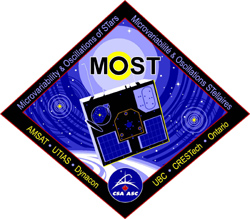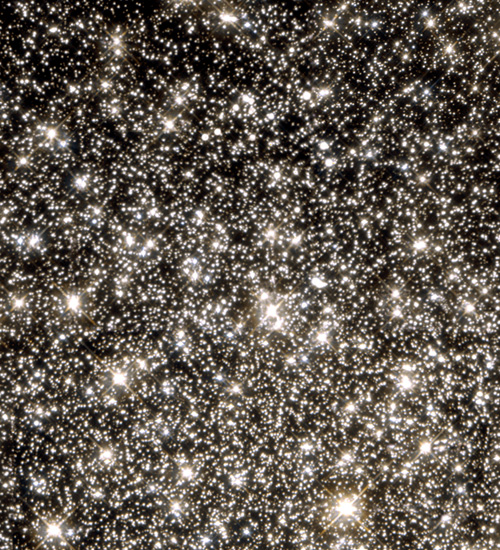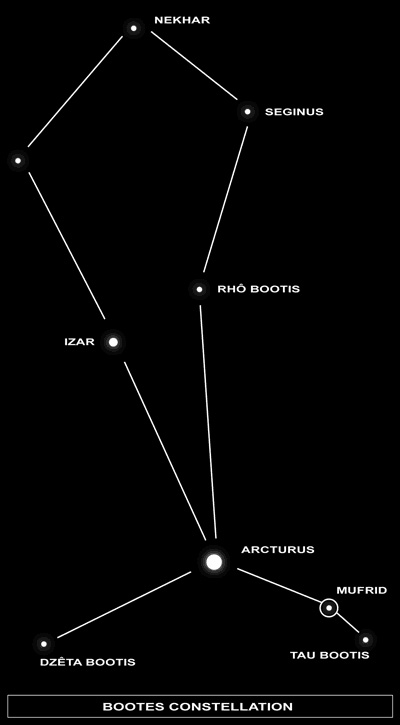MOST - A tiny satellite probes the mysteries of the universe
- Launch: June 30, 2003
- Status: Mission completed
Creating next-generation micro-satellites
The MOST project is a cooperative scientific partnership to create the world's smallest astronomical space telescope, capable of measuring the ages of stars in our galaxy and perhaps even unlocking mysteries of the universe itself.
Sponsored by the CSA's Space Science Branch, the various MOST project teams designed, built and monitor the microsatellite that orbits 800 kilometres above the Earth, so scientists can collect stellar data 24 hours a day.
The tiny satellite weighs only 60 kilograms and carries a high-precision telescope no wider than a pie plate. The device will measure the oscillation in light intensity of stars in order to determine their composition as well as age. Younger stars are comprised more of hydrogen than helium. Sound waves pass through hydrogen faster because it is lighter than helium. The sound waves set up pulsations in the star's surface, producing changes in the light intensity of the star. The satellite's telescope measures oscillations in intensity of the star, thus estimating its age.
The MOST satellite is unique not only because of its small size, but because it can conduct stellar measurements from space. Traditionally, scientists have relied upon expensive, Earth-based telescopes to provide research data. These instruments have been hampered by both the Earth's distorting atmosphere and its rotation—allowing for only a partial viewing of a star due to the day-night cycle. In space, the MOST telescope has an direct and constant view of a star for up to seven weeks at a time and can downlink data to ground stations at the University of British Columbia and the University of Toronto. The telescope is mounted on a platform about the size of a suitcase. The ability to use such a small satellite for a space telescope is made possible by Dynacon's light gyroscope technology that corrects the wobbling motion of the satellite and accurately controls where the satellite is pointing.

Toronto-based Dynacon Enterprises Limited was selected as the lead contractor in the MOST project. Other key partners include: the University of British Columbia, the University of Toronto Institute for Aerospace Studies (UTIAS), as well as the Centre for Research in Earth and Space Technology (CRESTech) of Toronto, the Radio Amateur Satellite Corporation (AMSAT), which includes both Canadian and U.S. chapters, AeroAstro, Inc. of Ashburn, Virginia, Spectral Applied Research, Routes AstroEngineering, the Royal Astronomical Society of Canada (RASC), and a team of consulting scientists from across Canada and the U.S., led by the principal investigator, Prof. Jaymie Matthews, of the Department of Physics and Astronomy of the University of British Columbia.
Canada is already a noted leader in the study of stellar pulsation and rapid variability. The MOST project builds on this expertise, helping to answer and expand upon fundamental questions about the nature of the universe that have intrigued scientists and non-scientists alike since the beginning of time.
MOST Discoveries
Small Satellite Makes Big Discovery
The MOST microsatellite has made a major astronomical discovery. The small space telescope has revealed that the star Procyon does not oscillate. This contradicts previous observations made from Earth-based telescopes. The discovery suggests that long-held theories on the formation and aging of the Sun and other stars need to be reconsidered.

A globular cluster of stars as seen by Hubble Space Telescope. (Credit: NASA, ESA, K. Sahu of STScI)
Procyon is a star in our Galaxy that is two times larger and seven times brighter than the Sun. However, the star has entered the last phase of its life and is becoming dimmer. As a result of studies conducted on the oscillation of the Sun, scientists have long believed that Procyon and other stars like it in the Milky Way emit similar pulses. MOST has proved them wrong.

Procyon is the eighth in importance in the night sky for its brightness. It is located in the Small Dog constellation (Canis Minor). (Credit: CSA)
Procyon's revelation
In January and February 2004, the MOST space telescope monitored Procyon over 32 consecutive days and detected no oscillations. "Day after day, we received data. The noise was dropping, but the signal did not appear", explains MOST mission scientist Jaymie Matthews. "And then, we began to realize that nothing was going to come out. This was a surprise and shocked us all," he said. Matthews, of the University of British Columbia, compared the situation to that of a physician discovering that a patient in good health had neither a pulse nor a heartbeat. To avoid drawing the wrong conclusions, the research team checked whether MOST's scientific instruments were functioning properly. The instruments were indeed in good working order and even detected pulses from another star, Eta Bootis.
The MOST findings challenge those using models based on observations from Earth for measuring stellar oscillations. According to those models, Procyon should have vibrated and oscillated at a greater amplitude than the Sun. Astronomers have already begun to review their theories on the emission of light from the core of celestial bodies such as the Sun. A French team that was in the process of planning a space mission to study Procyon's oscillations in 2006 is modifying its project in light of MOST's discovery. Barely a year since its launch, the small Canadian telescope has already expanded the boundaries of our knowledge of space.

Eta Bootis, or Muphrid, is a solitary star in the Bootes constellation. It was used by MOST to test its instruments. (Credit: CSA)
Explore further
- Date modified:

